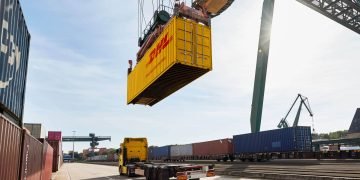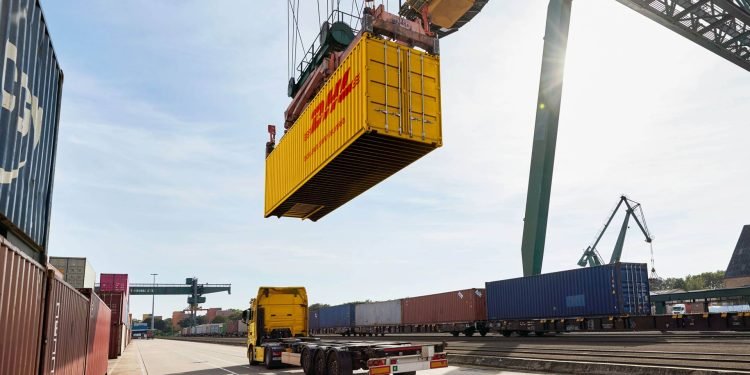By Eva Richardson – The Logistic News
In what could mark a turning point for European supply chains, a coalition of nine European Union countries signed a landmark agreement this week to modernize and unify rail freight transport across the continent. The pact, dubbed the European Rail Cargo Integration Accord (ERCIA), promises to eliminate long-standing inefficiencies and strengthen the role of rail as a strategic backbone of sustainable logistics in Europe.
Announced in Brussels on Tuesday, the agreement brings together Germany, France, Italy, the Netherlands, Poland, Austria, Belgium, Spain, and the Czech Republic in a coordinated plan to digitize, decarbonize, and integrate rail operations across borders.
From Fragmentation to Integration
The move comes amid growing concerns over Europe’s dependence on road freight, which remains dominant despite repeated pledges to shift transport to greener modes. Currently, only 18% of European inland freight moves by rail, down from over 25% in the early 1990s.
“The system has been chronically fragmented,” said Kristina Mertz, Transport Commissioner for the EU. “Different signaling systems, slow border procedures, and incompatible planning software have hindered rail’s competitiveness. This agreement changes that.”
Key Elements of the Pact
The ERCIA outlines several groundbreaking steps:
-
Unified digital freight documentation valid across all nine member states
-
Real-time tracking systems linked to a shared European data hub
-
Harmonized safety protocols and interoperability standards
-
Funding of €4.2 billion earmarked for rail infrastructure upgrades, including new terminals and intermodal hubs
-
Incentives for logistics providers who commit to shifting at least 30% of cross-border freight volumes from road to rail by 2030
The framework will be implemented in phases, beginning Q4 2025, with full operational rollout targeted by the end of 2028.
Industry Reaction: Optimism with Caution
The logistics industry responded with a mixture of enthusiasm and pragmatic skepticism. Major freight operators such as DB Cargo, SNCF Logistics, and Mercitalia Rail hailed the accord as “the most coordinated European rail initiative in decades.”
However, smaller operators and shippers have raised questions about the cost of compliance, particularly regarding new digital systems and the pressure to shift volumes before adequate capacity is in place.
“We fully support the idea, but timing and support mechanisms will be crucial,” said Claudia Van den Broek, CEO of Benelux Logistics Alliance. “Our clients want reliability, not just environmental claims.”
Environmental Stakes and Economic Context
The European Commission estimates that shifting just 20% more freight to rail could reduce the sector’s emissions by up to 50 million tons of CO₂ annually by 2035. The plan aligns with broader EU targets to achieve net-zero emissions in transport by 2050.
The rail cargo pact also comes at a time of global supply chain recalibration, where resilience, cost-efficiency, and sustainability are being re-evaluated in the wake of disruptions caused by pandemics, war, and climate change.
“This is not only about emissions,” noted Anton Horvat, policy analyst at the European Logistics Forum. “It’s about building a modern logistics ecosystem that can withstand shocks while staying globally competitive.”
What’s Next?
Implementation teams from each country will now finalize national action plans aligned with ERCIA’s milestones. The Commission has pledged annual progress reports, including key performance indicators on modal shift, infrastructure readiness, and private sector uptake.
The logistics world will be watching closely. If successful, ERCIA could become a blueprint not only for Europe but for other regions seeking to modernize rail freight as part of sustainable growth.
For now, the momentum is real—and the clock is ticking.
Eva Richardson is a senior correspondent at The Logistic News, specializing in freight infrastructure, cross-border policy, and sustainable supply chain innovation.























